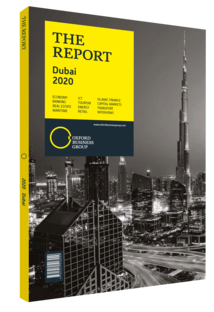Patrick Chalhoub, CEO, Chalhoub Group: Interview

Interview: Patrick Chalhoub
What risks are there of over-saturation in the sector given the increase in gross leasable area (GLA)?
PATRICK CHALHOUB: The peak at which demand outpaced supply occurred in 2015, since then supply has gradually superseded demand. The reason for this is that demand has remained stable since 2015, while supply has continued to rise. As a result, we have seen an even greater share of GLA devoted to retail. Dubai has now overtaken London as the world’s most important global shopping destination, hosting more international brands than anywhere else in the world.
In addition to this, there has also been an expansion of the digital segment, which has grown exponentially since 2015. In a market that is already flat and where supply is outstripping demand, e-commerce adds a further complicating factor. This confluence of trends has put downward pressure on sales in 2018 and early 2019, while the cost of doing business has in most cases increased or remained the same. Therefore, in many cases, we have seen retailers having to renegotiate their rents to cover higher business overhead incurred by increased sales pressure.
How is the retail sector adjusting to the changing visitor profile of the emirate’s tourists?
CHALHOUB: Dubai’s visitor profile has certainly changed in recent years. We have seen a reduction in customers from the GCC – most notably from Qatar, Saudi Arabia, Kuwait and Oman – countries that have started to expand their own domestic tourism markets. However, this reduction has been largely compensated for by a rise in Chinese, Indian and European visitors. The retail sector has been slow to recalibrate itself to this new make-up, as this has been a multifaceted shift in the source market. The new visitor profile has required brands to adjust many different aspects of their sales approach, changing the colour, size and design of their product offering, while also modifying their approach in line with different cultural sensitivities. Retailers need to have staff with the requisite linguistic and cultural knowledge to assist brands in tackling these new markets.
For retailers to effectively promote and market all these varied brands they need to invest in both training their staff accordingly and analysing the new customer profile. Those that adjust quickly will reap rewards from this opportunity as 30% of the global luxury goods market goes to Chinese customers and today there are a lot of Chinese visitors coming to Dubai. Brands that accurately understand this new changing market will be able to stay ahead.
What factors have hampered the expansion of e-commerce in both the UAE and the region?
CHALHOUB: The e-commerce market is growing at over 30% per year worldwide. Meanwhile, the global share of luxury fashion products sold online has trebled, rising from 2% of the total in 2015 to 6% in 2019, while digital beauty product sales have grown from 3.5% to 9% over the same period. The reason e-commerce has not taken off as much in the UAE and other emerging markets comes down to the costs and barriers associated with going digital. By selling wholesale to online marketplaces, you lose a lot of your traceability and have to squeeze your margins.
Additionally, shifting to e-commerce requires large investments in, for example, digital acquisitions, marketing, human capital and logistics. There are also other issues associated with moving into this segment that are specific to the UAE. The market remains very dispersed, so if you close some stores you may not make up the lost revenue through digital channels. Also closing stores involves renegotiating contracts and this can be a long and tedious process. Therefore, the bricks-and-mortar segment needs to innovate to compete with e-commerce, providing better customer service, increased digital processes and crafting unique, imaginative customer experiences.
You have reached the limit of premium articles you can view for free.
Choose from the options below to purchase print or digital editions of our Reports. You can also purchase a website subscription giving you unlimited access to all of our Reports online for 12 months.
If you have already purchased this Report or have a website subscription, please login to continue.

